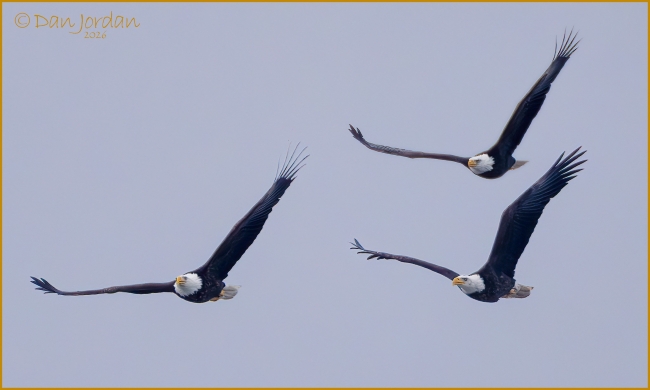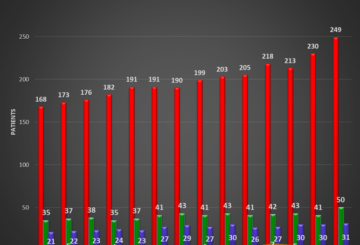Birds, birds, birds….. and what is a “conservaliberal?”
By Chuck Wiser, I write the words to share what my eyes see and my heart feels
It is most appropriate that I start this out with more discussions on our aviary neighbors as they are now nearly all fledged and feeder traffic has increased to a flurried frenzy. All species that favor us with their visits have now fledged offspring traveling to the feeders with them.
One of the highlights of summer, only officially “summer” by a few days, is experiencing this annual “natures adventure” of the birds. We added a 12 ft. X 12 ft. extension onto our back deck specifically for the purpose of being able to have a 3 full window view of the wonders of our backyard, especially the annual arrival and growth of the south wintering birds. We affectionately call this addition our Sun-Bird Room.
I am grateful for the morning dew making it a great excuse to postpone any “yard work” until nearly noon. More importantly, at least to me, it yields a great excuse to sit here with my morning coffee watching the frenzied activity of the birds as the adults and their recently fledged offspring venture forth to visit our feeders. This past week has been filled with what is likely the busiest, most frenzied time for bird activity. Prior to this week a few of the fledged species had started to show up. This whole week has seen the culmination of all species population explosion. I don’t recall ever before having seen this many Orioles and Grosbeaks, all having reached their fledged freedom, and thus now sharing our feeders.
Many readers, or Facebook friends viewing my posted pictures, ask me how we attract so many birds. Initially the “attraction” was accidental as our very first Oriole visit was to a Hummingbird feeder attached by suction cup to our rear facing kitchen window. We watched as a very colorful male Oriole fought to try and extract some of the nectar intended for the Hummingbirds. We had been aware of some Orioles in the area, as we had previously identified them as seen travelling the treetops nearby, happily chirping away. Until the experience on our Hummingbird feeder, we had not considered putting anything out for them.
The Orioles are the only visiting species that are not at all attracted by the Sunflower seeds that the Cardinals, Grosbeaks, Titmice, Finches and others favor. After we put the Oriole feeders out, nearly all the other species will, from time to time, visit the Oranges and Jelly.
Early in the feeding season for the Orioles they are mostly drawn to Grape Jelly. We put small condiment dishes filled with jelly in specially built cup holder feeders. Early on, Grape jelly is by far the flavor of choice, but we also add some dishes of Orange Marmalade. In addition to the cups of Jelly we have two locations where we hang Grape jelly feeders. With a jar of the jelly that is inverted so its gravity feeds it out through openings onto a small flatter dish/plate where the birds can land and peck away. We also cut an orange in half and attach that to the feeder for those birds that choose that food item. Lately the oranges have not been a favorite of the Orioles and ignored.
When the new hatchlings are still in the nests the adults make continuous trips back and forth from the feeders to their nests carrying jelly to their young. At this time, the Oranges and Marmalade become an important part of the feeding routine. My guess is that it is because marmalade has actual small chunks of orange rind and it’s easier to carry and feed to the young.
The hatchlings are in the nest approximately 3 weeks until they “fledge” and join the adults with trips to the feeders. For the first few visits the adults will feed the juveniles by dropping Jelly into the yawing open beaks. After that they will often pretend to give them something by going to the feeder but then coming back with an empty beak. Soon after, the young, out of desperation I guess, follow the adults imitation and start getting their own Jelly.
The Grosbeaks and Titmouse will simulate the above but it’s to the Sunflower feeder instead of the Jelly. I will add however, that nearly all the species will occasionally visit the Jelly feeders, apparently for a little dessert. This year seems to have been a very “fertile” aviary year as there has been an increased number of fledglings compared to other years.
One reference source that I used to check my data suggested that the adult Orioles will drive the juveniles out of the territory when they are between one and two months old. Based on the numbers and activities I don’t think that has happened here, at least not yet.
First time “birders” may be disappointed at not being able to attract the Orioles. If you see or hear them in the area don’t give up. The Orioles generally arrive in our area at about the first week of May. Occasionally, it’s a little sooner so we often put one dish of jelly out earlier just in case. My recommendation to those that ask is to put out a dish of jelly and an orange half early in May. When they first arrive, former dwellers may return to the same location, but all the returnees may check around from site (house) to site searching for a location where they can get the easy pickings. These birds do also eat insects, so they haven’t been starving.

We are often asked what our favorite bird(s) is/are and depending on when we are asked, we might either answer right away or contemplate for a few seconds before answering. It’s hard to choose this time of year as the migrated Grosbeaks and especially Orioles are active and vivid right in front of our eyes much more frequently than other birds. As I contemplate and evaluate, I come up with several answers initially. I must admit that the thrill of watching these Orioles tips the scale in their favor a little bit. Watching the Grosbeaks and Orioles maneuver and jockey for a position at the feeders fills our eyes and hearts nearly continuously all day from dawn to dusk from May through July and often into August. The Cardinals seem to defer to these visitors and take a back seat somewhat as far as aggressive visits to the feeders. They too have fledged young that are now at the feeders, but they are definitely outnumbered by the seasonal visitors.
But…given the loyalty and patience that the Northern Cardinals, that reside in this area exhibit year around, I must give them the nod as to our overall favorites. They might not be as flamboyant, or initially as colorful, as the bright orange and black male Oriole, but they do have their moment of sunshine when they perch at the top of our apple tree or nestle in among the apple tree flower buds as shown in the picture above, that was taken this spring.
I have commented previously on the fact that in the animal kingdom the male of the species is more often the most colorful. Compared to humans, except for the days of the swashbuckling pirates, we males typically are pretty drab when compared with our female counter parts. Looking into that recently it is explained that the male of the species is most colorful for a couple of reasons, both related.
The first rather bland explanation was: “The colorful plumage of males allows birds within the species to recognize each other. It also allows predators outside the species to recognize birds that are not safe to eat. Dull feathers protect female birds.”
Not really satisfied with that explanation I continued my research only to find out that there isn’t any absolute certainty as to why, but the explainers get into Darwin’s explanations of the evolution theories, survival of the fittest, and the need for the females to more easily hide from predators if their colors are not as visible. Other theories, still linked to evolution and survival of the fittest lean toward the males need to “show themselves off” such as with their colors exhibiting “maleness” or the long-feathered tails of peacocks doing the same.
I will end this by wishing you a very patriotic and blessed July 4th. Without getting too political I suggest that now would be a good time to evaluate our patriotism and to look toward this election year with an open mind and heart. Don’t focus on the words of pundits of the press or TV talk shows and broadcasts, but rather, investigate the actual words of the politicians who want your vote.
I Am A “Conservaliberal”
I detest being labelled a “liberal”
I am “conservative” in numerous ways.
My political beliefs tend to follow
A path based on conscience these days.
I prefer to be known as a ‘thinker’
Who can decide what is important to me.
I resist following dictates from others
In my heart, my leader I see.
I do not follow a path built by others
For they know not just how my life plays a part.
In the journeys through life that I’ve travelled
I’ have always followed my heart.
I guess that you can say I see from both sides
How a divide can exist ‘tween right and wrong.
So, I guess I am “Conservaliberal”
As together we’ll still be strong






